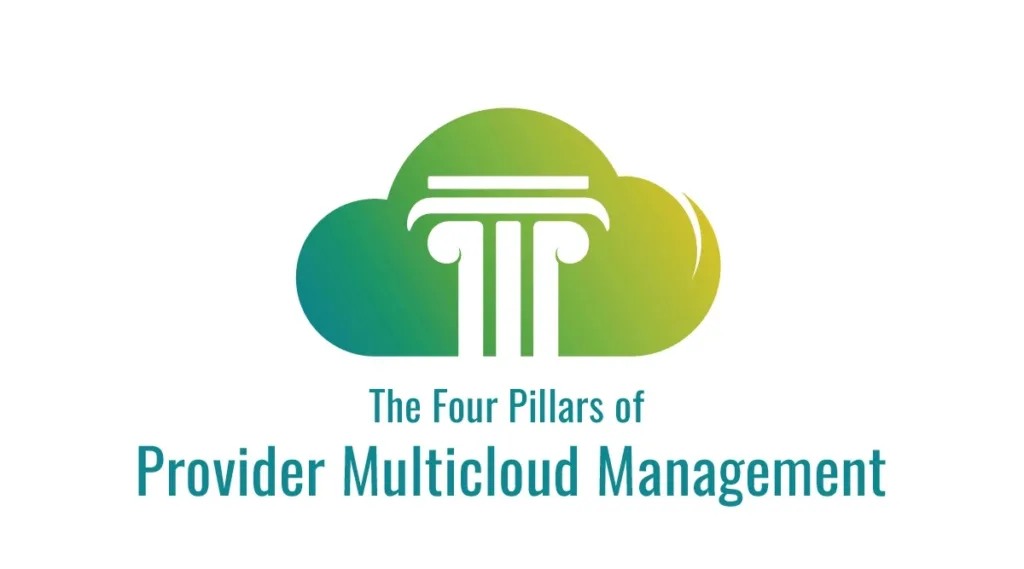
Cloud providers offer a multitude of different applications, platforms, and infrastructure services. No single cloud provider may have everything an organization needs. That’s why most companies mix and match cloud services from multiple providers to optimize performance and minimize cost. A multicloud strategy can mean using an application service from one provider, a storage service from another, and a cloud development platform from a third. An organization may run different types of workloads from the same application in separate cloud environments to meet different needs, such as high-performance computing vs high bandwidth or cost-efficiency. Some IT departments place their sensitive data and processes in high-security environments to ensure compliance with government regulations.
In a survey of IT executives by Forrester, 48% cited backup and storage as their main reason for moving to a multicloud environment. Other top reasons included disaster recovery, data center consolidation, rapid application development, and optimizing application performance.
What to address when managing your multicloud infrastructure
Managing a cross-platform, cross-cloud environment isn’t simple, however. There are four important topics that you’ll need to address when planning a multicloud infrastructure. Those are staff expertise, cloud security, intra-cloud connectivity, and cloud management.
Cloud services expertise
Managing cloud services from different providers and platforms is not the same as managing in-house applications. Multicloud management requires experience in cloud services development, cloud security, workload optimization, and services orchestration. If you lack in-house expertise, you can turn to a managed cloud services provider to handle your cloud services development, security, and day-to-day management. For example, TierPoint’s professional services offers multicloud migration planning, cloud security assessments, cloud application management, and cloud performance monitoring.
Cloud security
Security in a cloud environment is shared between the provider and the customer and depends on what type of services the customer is using. Multicloud environments can become complex, as providers have different approaches. You’ll need to learn how the providers’ security protections differ and whether they will work with your existing security solutions. A cloud security consultant or managed security services provider (MSSP) can help by assessing your security needs and mapping out a plan that works with your cloud providers’ security as well as meets data security regulations for your industry. MSSPs can also implement and manage cloud security solutions on behalf of your IT department. Some of the services that an MSSP offers include cloud application layer security, and identity and access management.
Also read: The Strategic Guide to IT Security
Cloud management
Managing multiple cloud services and platforms requires a central management application to help IT managers monitor, administer, and balance the usage of cloud resources to get the best performance and reduce cloud sprawl. A cloud management solution may have features such as: a policy engine for configuring and monitoring cloud services; process and services orchestration; provisioning of virtual machines and other cloud resources; cost management; security monitoring; and compliance tracking.
Orchestration is an important feature of many, though not all, cloud management applications. Orchestration tools are used to manage the interaction of cloud services, workloads, and workflow across different cloud environments.
VMware’s CloudHealth is a good example of a cloud management application. Many cloud services providers also provide cloud management tools, but these are typically only for their own cloud platform.
Cloud connectivity
Direct connections to multiple cloud providers are cumbersome and expensive. Instead, most organizations turn to cloud services middlemen — such as network as a service (NaaS) or regional cloud services providers — to connect to multiple cloud providers. These cloud connectivity providers, sometimes called cloud exchanges, have geographically distributed networks and partnerships with multiple cloud platform providers such as Amazon or Google. A customer organization can plug into one central provider to access cloud services from multiple cloud platforms.
Choose the right multicloud management provider
Selecting a cloud provider to serve as your multicloud hub is an important factor in the success of your multicloud environment. After all, the provider will be responsible for all access to cloud services, regardless of the vendor or platform. The best cloud service providers offer robust and redundant communications networks, resiliency and guaranteed uptime, scalable infrastructure, physical and operational security, and compliance certifications. In addition, a provider that has partnerships with two or more major public cloud providers is critical for flexibility in selecting cloud services and avoiding vendor lock-in.
Many cloud connectivity providers also offer multicloud management tools and managed services such as disaster recovery and cloud security. Using a managed service relieves your IT staff of the repetitive day-to-day cloud management tasks and plug gaps in your in-house expertise.
As a managed cloud provider, we offer a variety of cloud provider partnerships, including Microsoft Azure and Amazon Web Services, as well as private cloud, network services, managed security, and disaster recovery services.
Want to learn more about cloud strategy and management? Contact us today.

